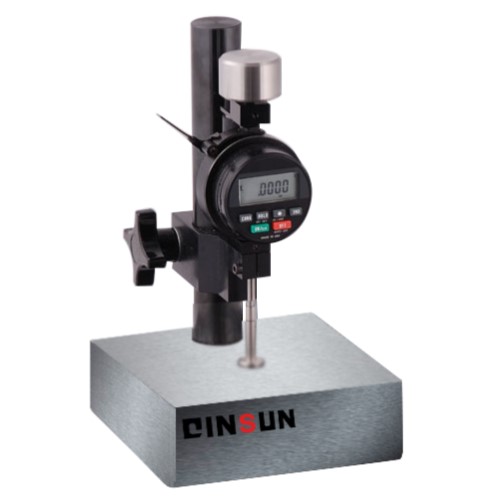
NewsInformation Center
Which instruments are mostly used for testing fabric thickness?
2023/11/03
When it comes to testing fabric thickness, there are several instruments commonly used to obtain accurate and reliable measurements. The choice of instrument may depend on factors such as the type of fabric, the desired level of accuracy, and the specific standards or requirements to be met. Here are some of the instruments that are commonly used for testing fabric thickness:
A fabric thickness gauge, also known as a fabric thickness tester or a thickness micrometer, is one of the most popular instruments for measuring fabric thickness. It is a handheld device with a measuring head that applies a constant pressure to the fabric sample to determine its thickness. The gauge typically consists of an anvil and a carbide or steel spindle that comes into contact with the fabric. As the spindle compresses the fabric, a measurement is displayed on a digital or analog scale. The fabric thickness gauge is versatile and can be used for various types of fabrics.
2. Mechanical Dial Thickness Gauge:
The mechanical dial thickness gauge is another widely used instrument for measuring fabric thickness. It consists of a dial indicator attached to a probe or an anvil that is pressed against the fabric. The gauge measures the distance between the anvil and the probe and displays the reading on a dial. The mechanical dial gauge provides a simple and cost-effective solution for fabric thickness measurements.
3. Electronic Thickness Gauge:
Electronic thickness gauges use advanced technology to measure fabric thickness accurately. These gauges usually have a flat anvil surface and a movable probe or sensor. The probe is electronically controlled to adjust the pressure applied to the fabric sample. The measurement is displayed on a digital screen, providing a precise reading of the fabric thickness. Electronic thickness gauges often offer additional features such as data logging, statistical analysis, and connectivity options.
4. Laser-Based Thickness Gauge:
Laser-based thickness gauges use laser technology to non-destructively measure fabric thickness. These gauges emit a laser beam onto the fabric surface and measure the time it takes for the laser to reflect back. By calculating the distance based on the speed of light, the gauge determines the fabric thickness. Laser-based gauges are highly accurate and suitable for measuring thin and delicate fabrics.
5. Ultrasonic Thickness Gauge:
Ultrasonic thickness gauges use ultrasonic waves to measure fabric thickness. These gauges emit high-frequency sound waves into the fabric, and the time taken for the echoes to return is measured. By knowing the speed of sound in the fabric, the gauge calculates the fabric thickness. Ultrasonic thickness gauges are particularly useful for measuring thick, heavy, or multi-layered fabrics.
6. Optical Fiber Sensor Thickness Gauge:
Optical fiber sensor thickness gauges use a network of optical fibers to measure fabric thickness. These gauges work by passing light through the fabric sample and detecting changes in reflection or transmission. By analyzing the light signals, the gauge determines the fabric thickness. Optical fiber sensor gauges are known for their high accuracy, especially in measuring thin and transparent fabrics.
7. Projection Microscope:
A projection microscope is a specialized instrument commonly used in the textile industry to measure and examine fabric thickness. The fabric is placed under the microscope, and its image is projected onto a screen or a digital display. The microscope allows for precise measurement of fabric thickness by observing the focus position. Projection microscopes are capable of measuring very thin fabrics with high accuracy.
It is crucial to follow proper testing procedures and standards while using these instruments for fabric thickness measurement. Factors such as the sample preparation, measurement location, and pressure applied must be consistent to ensure reliable and comparable results. Additionally, it is important to calibrate the instruments regularly to maintain accuracy.
Remember that different instruments may have different capabilities, limitations, and measuring ranges. Always choose the instrument that suits your specific fabric type, thickness range, and accuracy requirements. It is advisable to consult the instrument manufacturer or seek guidance from experts to select the most appropriate instrument for your fabric thickness testing needs.
Previous: What is the flexometer test for rubber?
N e x t : How to Enhance Tear Strength of Fabric: Key Factors and Techniques




